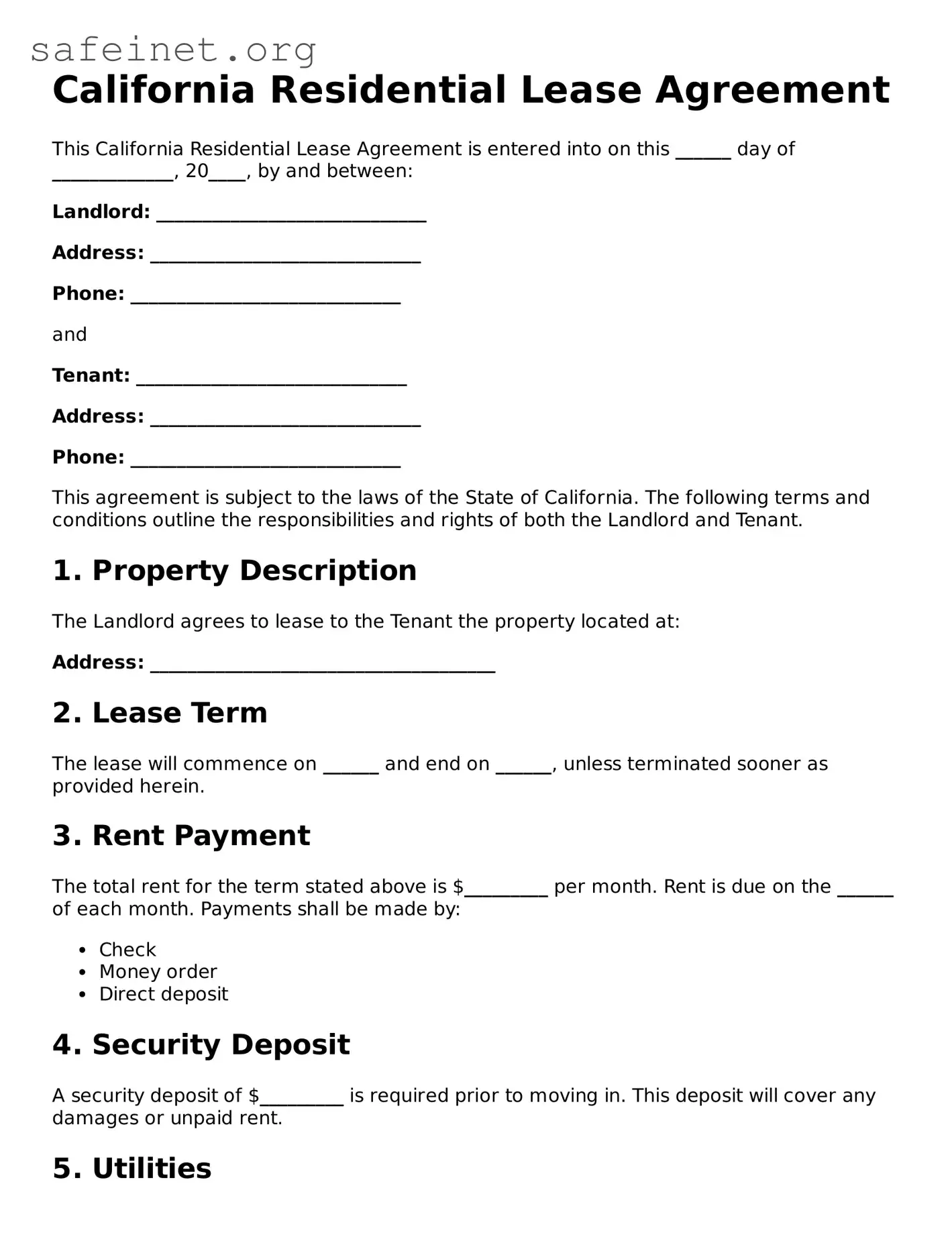What is a California Residential Lease Agreement?
A California Residential Lease Agreement is a legally binding document that outlines the terms and conditions between a landlord and a tenant regarding the rental of a residential property. It specifies the duration of the lease, rent amount, and responsibilities of both parties, ensuring a clear understanding of expectations.
What key terms should be included in the lease agreement?
Essential terms include the names of all tenants and landlords, the rental property's address, the lease duration (month-to-month or fixed term), the monthly rent amount, payment due dates, security deposit details, maintenance responsibilities, and rules around pets and guests. Clarity on these terms can prevent misunderstandings later.
Are there any specific California laws I should be aware of?
Yes, California has specific laws that govern residential leases. For instance, landlords must follow the rental control laws in certain cities. Additionally, the legal requirements for security deposits, late fees, and eviction processes are set forth by both state and local statutes. Familiarizing yourself with these laws is crucial to ensure compliance for both landlords and tenants.
How can I terminate a lease agreement in California?
To terminate a lease agreement, a tenant or landlord must provide written notice as specified in the lease. For month-to-month leases, typically a 30-day notice is required. For longer leases, the terms of the lease will dictate the notice period. It’s important to document the termination process to ensure all parties are informed and protected.
Is it important to conduct a walk-through before signing the lease?
Absolutely. Conducting a walk-through allows potential tenants to assess the property’s condition and helps identify any pre-existing damages or issues. Documenting these findings can save both parties from disputes about security deposit deductions upon move-out.
What happens if the tenant fails to pay rent on time?
If a tenant fails to pay rent on time, the landlord usually has the right to charge a late fee, as specified in the lease agreement. California law allows landlords to charge a reasonable late fee, but it must be explicitly stated in the lease. Persistent non-payment could lead to formal eviction proceedings, which must also follow legal procedures.
Can I modify the lease agreement after it has been signed?
Modifications to a lease agreement can only be made with the consent of both parties. Whether it involves changing the rent amount, adding new terms, or altering responsibilities, all changes should be documented in writing. A lease amendment can be created to officially reflect these modifications.
What is considered an illegal term in a California lease agreement?
Illegal terms include any that violate California law, such as waiving a tenant’s right to a habitable living condition or enforcing automatic renewals without proper notice. Additionally, clauses that discriminate against protected classes under the Fair Housing Act are not permissible. It is essential for both landlords and tenants to spot such terms to avoid legal complications.
How can disputes be resolved between landlords and tenants?
Disputes can be resolved through various means, including direct communication, mediation, or legal action. Many leases include a clause that encourages mediation as the first step. However, if issues cannot be resolved amicably, either party may seek resolution through small claims court, where legal rights and responsibilities can be clearly addressed.
